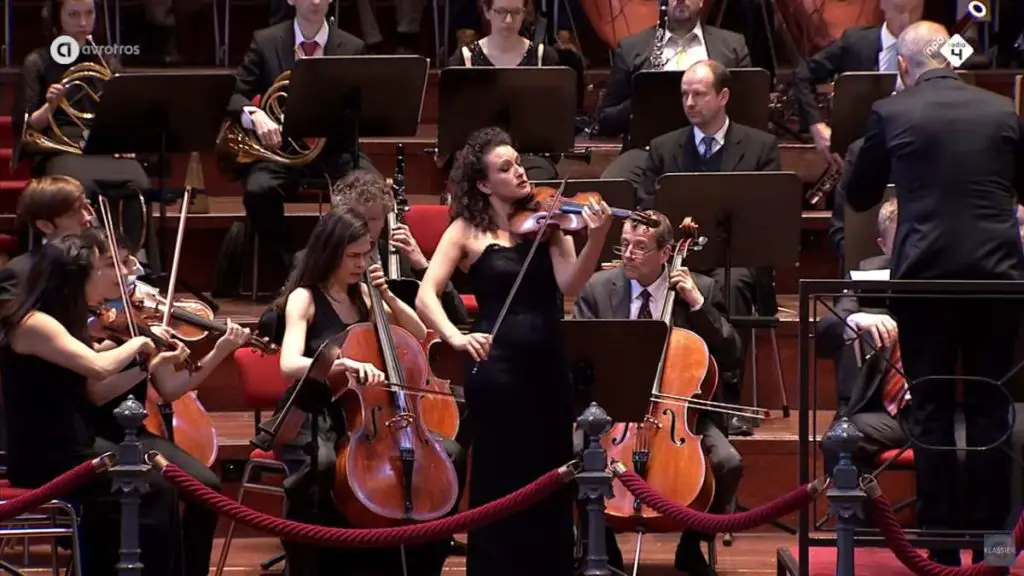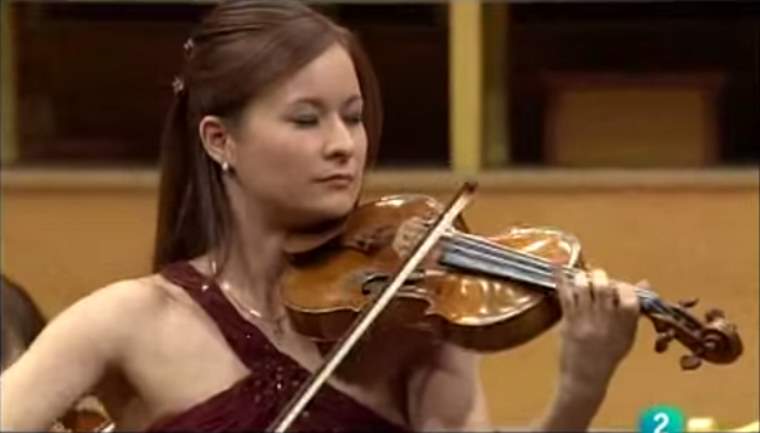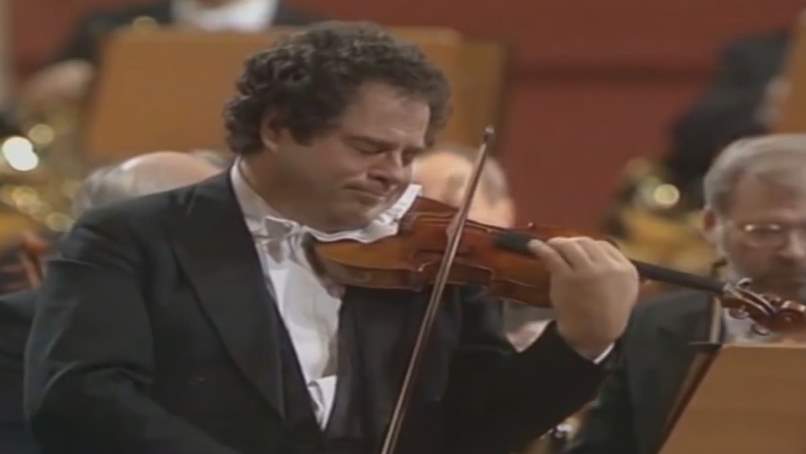Accompanied by the Detroit Symphony Orchestra, American classical violinist Hilary Hahn performs Ludwig van Beethoven’s Violin Concerto in D major, Op. 61. Conductor: Leonard Slatkin. Encore: Gigue from Johann Sebastian Bach’s Partita for Violin No. 3. The performance opened the orchestra’s 2016-17 season.
Programme
With start times in the video:
- Beethoven’s Violin Concerto
- Allegro ma non troppo (D major) [00:42]
- Larghetto (G major) [25:13]
- Rondo. Allegro (D major) [34:24]
- Encore: Gigue from Johann Sebastian Bach’s Partita for Violin No. 3 [47:07]
Beethoven’s Violin Concerto
Ludwig van Beethoven’s Violin Concerto in D major, Op. 61, is one of the most famous and beloved violin concertos in the classical music repertoire. The concerto was composed between 1806 and 1807 and premiered on December 23, 1806, in Vienna.
Movements
1. Allegro ma non troppo
The first movement is marked as “Allegro ma non troppo” which translates to “Fast but not too much.” This movement is considered one of the most magnificent and innovative of all violin concertos.
The first movement of the concerto is characterized by an extended orchestral introduction, in which the main themes of the movement are introduced. The violin enters after a few minutes with a solo passage that immediately showcases the virtuosity of the soloist.
Throughout the movement, the violin and orchestra engage in a dialogue, with the soloist showcasing both lyrical and virtuosic playing. The movement has a sonata-allegro form, which means it has an exposition, development, and recapitulation section.
The exposition section introduces two primary themes, which are played by the orchestra and the soloist, respectively. The themes are then developed and expanded upon during the development section, which is marked by dramatic and intense passages.
The recapitulation section reintroduces the two primary themes, but this time, they are played in a slightly different way. The movement concludes with a solo cadenza, in which the soloist performs an unaccompanied virtuosic passage before the orchestra returns to bring the movement to a close.
2. Larghetto
The second movement is marked as “Larghetto,” which means “somewhat slow” or “broadly.” This movement is known for its lyrical and emotional qualities and is often considered one of the most beautiful slow movements in the entire classical music repertoire.
The second movement begins with a quiet and melancholic introduction by the orchestra. The solo violin then enters with a tender and expressive melody that is one of the most recognizable themes in all of classical music. The violin’s melody is accompanied by a gentle and delicate orchestral accompaniment that complements and enhances the soloist’s performance.
Throughout the movement, the violinist performs a variety of virtuosic and expressive passages, with the orchestral accompaniment shifting between different instrumental groups to provide a rich and varied texture. The movement gradually builds in intensity and emotion before resolving into a final, serene cadence.
The second movement of Beethoven’s Violin Concerto is often considered a highlight of the work, as it showcases Beethoven’s exceptional ability to craft beautiful and emotionally charged melodies. The movement also demonstrates the soloist’s technical and expressive abilities, as the violinist is required to perform a variety of challenging passages while maintaining a sense of lyrical flow and expression.
3. Rondo. Allegro
The finale of Beethoven’s Violin Concerto is marked as “Rondo: Allegro,” which means “fast and lively (in rondo form).” This movement is known for its energetic and joyful character, providing a contrast to the more introspective and emotional second movement.
The third movement begins with a lively and rhythmic orchestral introduction that quickly transitions into the solo violin’s first entrance. The violin plays a lively and playful theme, which is then repeated and developed throughout the movement. The music alternates between sections of fast and lively playing, with moments of more lyrical and expressive passages.
The movement features a variety of technical challenges for the soloist, including rapid scales and arpeggios, as well as moments of virtuosic flourishes and runs. The orchestra provides a lively and supportive accompaniment throughout, with the brass and percussion adding to the excitement and energy of the music.
The movement concludes with a final flourish from the solo violin, bringing the concerto to a triumphant close.
Sources
- Violin Concerto (Beethoven) on Wikipedia



